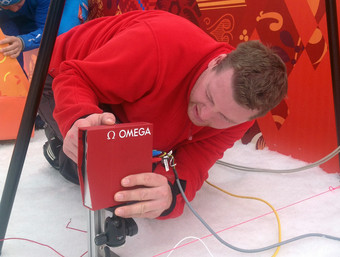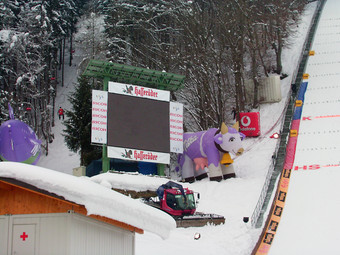Ski Jumping
There are four essential phases of a jump:
1) In-run, wherein a jumper generates speed while sliding down the run to the springboard. Speed is essential to a good jump. Important are his position, ability to keep the skis steady, weight, and as little resistance possible on the track.
2) The jump. It must be powerful and carried out at precisely the right time.
3) The flight phase. This is determined primarily by the weight of the jumper, his flight position, and the transition between jump and flight position.
4) Landing and finish
Swiss Timing and Ski Jumping
Waiting for the best wind condition is one of the peculiarities of this sport. Swiss Timing not only measures wind speed, but also uses a video system to record athlete speed during in-run and the length of the jump. In addition, Swiss Timing uses live traditional and virtual TV graphics to identify record areas, and insert a laser line with the record to beat. Flight, reception, and finish are scored by judges using Swiss Timing terminals.
Scope of Swiss Timing services
Swiss Timing uses a variety of means to communicate results. There is, of course, paper printing of all results and statistics, but scoreboards also bring real time results to the public and athletes. Each TV or radio commentator has a CIS (Commentator Information System) screen that provides direct and permanent access to all results, and the same results are broadcasted live on the Internet. For further information, please click on the links below.
- Timing
- Public & specific scoreboards
- On-venue results (OVR)
- Commentator information system (CIS)
- TV graphics
- Virtual graphics
Services for Ski Jumping





